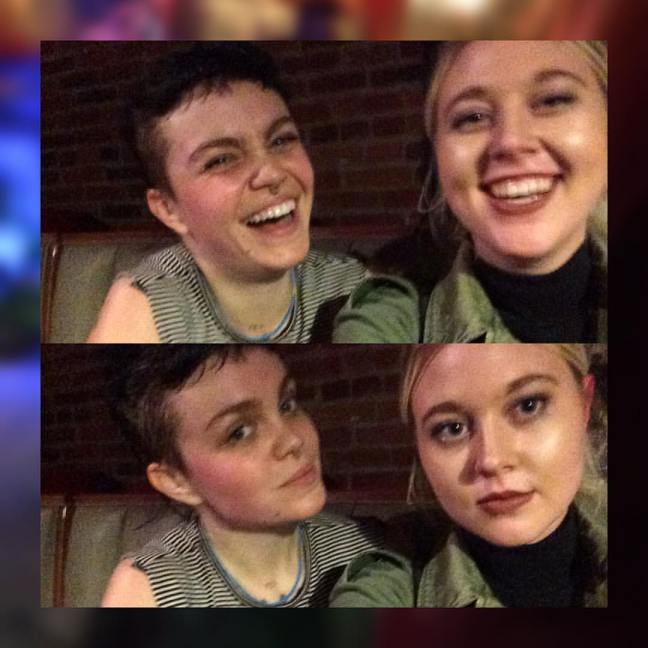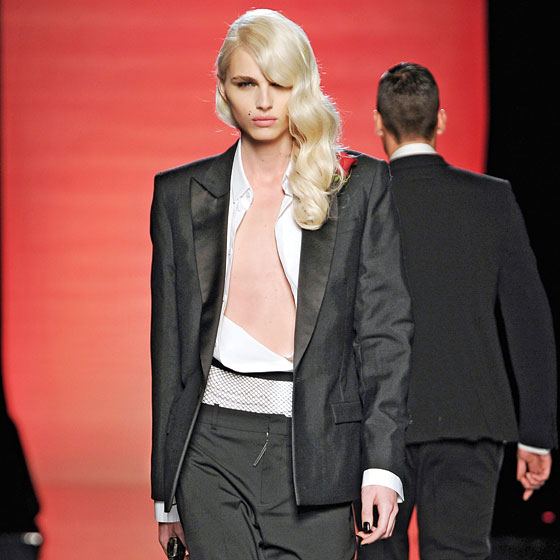by blair morton
It seems like the hot topic people are talking about is gender. Turn on the news and political figures are arguing about what bathrooms people should use, we go to the store and are bombarded with varieties of pink and blue products – and when a company attempts to deviate from that, (like Target did last summer ) they cause waves. The couple that chooses to opt out of gendering the child makes headlines and has a guest spot on the Today Show. And now, my 55-year-old aunt knows what a transgender person is.
Gender is an important construct in which people revolve their lives, logic and research around. This blog was meant to explain how gender is bullshit, but really — is it? If we separate the concept of gender from the binary, what do we get? A non-binary world does not have to be a gender-singular world — a non-binary world is not a world where everyone is the same; rather, it is a world where everyone is different. We are taught that gender is a social construct; that gender is learned, role and expectations are cultural, and that gender is a fluid spectrum. Scientists and academics have devoted lives of study to tracking down where sex ends and gender begins, only to find that there is no finite point.
Scientists want to attribute gender to evolutionary psychology and neurology. What many claim and others ignore, is that there is a “male brain” or “female brain”. Countless studies of the brain set out to prove such neurological differences, yet when results conclude that there are no differences, they are seen to either be failed tests or the results are never publicized. This is called a “file drawer” phenomenon. Due to this reaction, it is difficult to know how many tests have shown there are no differences between male and female brains. Tests aiming to prove gender difference on a neurological level sometimes cut corners to prove their hypothesis. Sample sizes are small, test subjects and administrators are biased, and full reporting is not always practiced. These tests are also flawed in the fact that they place brains in a difference binary, where anyone who falls outside of their spectrum is abnormal. In a way, this diagnoses gender-nonconforming folks has having a brain defect.
Gender is not a brain defect. Gender is a social defect.
These brain differences also aim to explain why men are better at math or science, and how women are better at communicating. (This is the part of the post where you and I need to roll our eyes.) If we can attribute certain qualities of the human brain to what makes a “good” man or woman, science can attempt to set a standard for a “perfect” man or woman. However, social standards are not medical standards. A more logical explanation of our brains is that we are merely mosaics of masculine and female traits. There are no differences in the functioning of male or female brains, even if some brains look differently than others.
These forms of neurosexism are attempts to deconstruct the idea that gender is a social construct, yet they still aim to reinforce social norms. So, which is worse — social construction or medical construction? And how can we maneuver away from the binary system? Seeing others as people before a gender category is the first step, caring about others identities and pronouns is another. Divesting from gendered expectations leaves room for folks to do what they please without the pressure of being who they are expected.
Cordelia Fine, Delusions of Gender: How Our Minds, Society, and Neurosexism Create Difference (New York: W.W. Norton, 2010)
Anne Fausto-Sterling, Sex/Gender: Biology in a Social World (New York: Routledge, 2012), 43-69






 A person is not mentally a male or a female based on their genitals. As Fine points out, “Once in the public domain these supposed facts about male and female brains become part of the culture, often lingering on well past their best-by dates.” Implying that our culture and our media has influenced our understanding of gender so strictly in the binary that it’s hard to accept things like “Intersex people exist.”
A person is not mentally a male or a female based on their genitals. As Fine points out, “Once in the public domain these supposed facts about male and female brains become part of the culture, often lingering on well past their best-by dates.” Implying that our culture and our media has influenced our understanding of gender so strictly in the binary that it’s hard to accept things like “Intersex people exist.”
